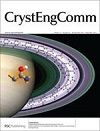Pharmaceutical Materials Science and Engineering Laboratory
Our research focuses on manufacturing science of solid dosage forms, such as tablets and capsules. Formulation and process development is achieved by a clear scientific understanding of powders, including their flow and compaction properties. In this way, design replaces trial and error, and improved quality results.
We rely on three levels of control to attain the desired powder properties for successful manufacturing: (1) study and specification of the physico-mechanical properties of drugs; (2) incorporation of appropriate excipients for optimum mechanical properties; and (3) optimization of processes such as mixing, granulation, and compaction, based on a mechanistic understanding.
Collaboration Opportunities
We welcome opportunities to collaborate with the industry on challenging projects. Some examples of such collaboration are listed below.
1. Assessing manufacturability of a formulation
a. Powder flow
b. Powder tabletability
c. Hygroscopicity
d. Drug release profile
e. Sticking tendency
2. Profiling solid-state properties of drugs and excipients
a. Polymorph screening and characterization
b. Salt screening
c. Cocrystal screening
d. Crystallinity
e. Crystal structure elucidation
f. Thermodynamic stability relationship
g. Process-induced crystal form conversion (trouble-shooting and control)
h. Drug-excipient compatibility
3. Profiling mechanical properties (crystal and powder)
a. Yield strength (in-die and out-of-die Heckel analysis)
b. Young’s modulus and tensile strength
c. Indentation hardness (nano- or micro-)
d. True density
e. Porosity of irregular specimens
f. Understanding tabletability, compressibility, compactibility, and elastic recovery, etc., under realistic manufacturing conditions
g. Mechanical behavior under high (GPa) pressures
4. Powder engineering (feasibility tests)
a. Formulation development
b. Process understanding (direct compression, dry and wet granulation)
c. Surface engineering for enhanced pharmaceutical properties
5. Instrument sharing
a. Easy access to state-of-the-art instruments
b. Cost savings on instrument maintenance and human resources
c. Ready access to expert guidance and training
d. Rapid turnaround time
e. High quality data
